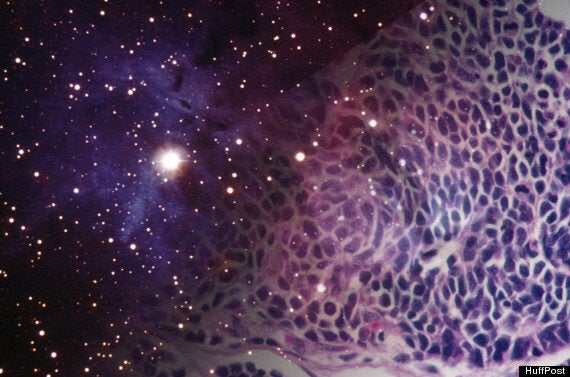Astronomers are looking for cancer. In space. Kinda.
A report from the University of Cambridge points out that one of the surprising spin-offs from the search for exoplanets has been a new way to look for signs of cancer.
It’s called PathGrid, and it is a cross-disciplinary initiative by researchers at the Institute of Astronomy and Cancer Research UK Cambridge Institute.
PathGrid is software that is able to look for crucial patterns in large amounts of data and images - regardless of what scale that data is actually representing.
For exoplanets that a map of light data from ridiculously huge areas of space containing billions of stars. For cancer that’s tiny areas of the human body - which contain trillions of cells, where stained nuclei indicate proteins that might mean cancer is present.
The trick is that - to PathGrid - those two things look about the same:

PathGrid is able to scan that data for vital signs of distant alien planets - usually indicated by ‘wobbles’ in light from distant stars.
“Both astronomy and cell biology deal with huge numbers: our Milky Way contains several billion stars, our bodies tens of trillions of cells,” said astronomer Dr Nic Walton at the university’s website.
“Once we start characterising the objects, looking at what’s a star, what’s a galaxy, then we start to see the really interesting bigger picture. Light is distorted by gravitational mass on its way to us, so the shapes of the galaxies, for example, can tell us about the distribution of dark matter towards them. When we start counting stars, we start to see structures, like tidal streams.”
The result in both cases are images that are made up of hundreds of gigabytes of data. Using adapted versions of PathGrid astronomers, cancer researchers and others are able to share developments in image analysis and speed up an otherwise torturous process.
Professor Carlos Caldas at the CRUK told the university that in the future this type of algoritmic image analysis could be hugely cost effective for communities without access to their own specialist labs:
“You could imagine a scenario where a clinician takes a biopsy and a pathologist processes and stains the slide, takes a picture and digitally relays it. This is then analysed by one of the algorithms to say if it is a tumour, identify the tumour type and say how aggressive it will be,” he said.
The full story is over at the University of Cambridge website - it’s a fascinating tale, and if successful could see the search for life in outer space directly complementing the fight to save lives on Earth.